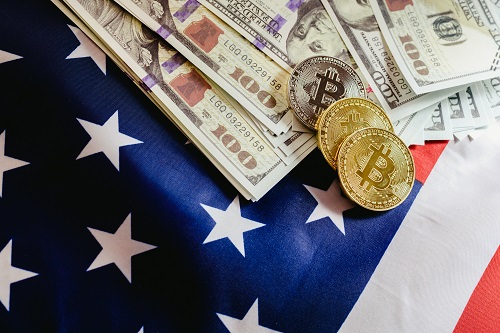
The US dollar is the global reserve currency and has a significant influence on risk assets all over the world, including Bitcoin. We have seen a negative correlation between the two since the transition to a tight monetary regime, meaning that when the dollar weakens, Bitcoin tends to strengthen.
However, this inverse relationship has softened in recent weeks, as Bitcoin has not benefitted from the US dollar’s slump caused by lower inflation. But if history is to be followed, the correlation could return and Bitcoin may have a chance to advance.
The US dollar’s status as the world’s reserve currency has enabled it to dictate international trade, debt and non-bank borrowing. When it weakens, the cost of servicing this debt decreases, creating more liquidity in the global market. This leads to risk assets, including Bitcoin, appreciating when the dollar falls.
This was evident in 2022, when the dollar surged to a twenty-year high while Bitcoin declined alongside other risk assets. However, the correlation has softened in the last month, likely triggered by the SEC’s lawsuits against Binance and Coinbase, and the spot ETF applications from various asset managers.
In the past week, the dollar has weakened further, dropping by 2.5%. This is its worst fall since November, when softer-than-expected inflation readings caused speculation that the Federal Reserve would reduce interest rate rises sooner than expected.
The deviation in the inverse relationship between the dollar and Bitcoin has happened a few times before in the last six months, only for it to quickly return. If the same happens again, Bitcoin could benefit from a weakening US dollar.
It should be noted that crypto-specific risk is still high and the macro climate is uncertain, but a weakening dollar has historically been a good sign for Bitcoin. Therefore, if the inverse relationship returns, Bitcoin could be in a place to advance.